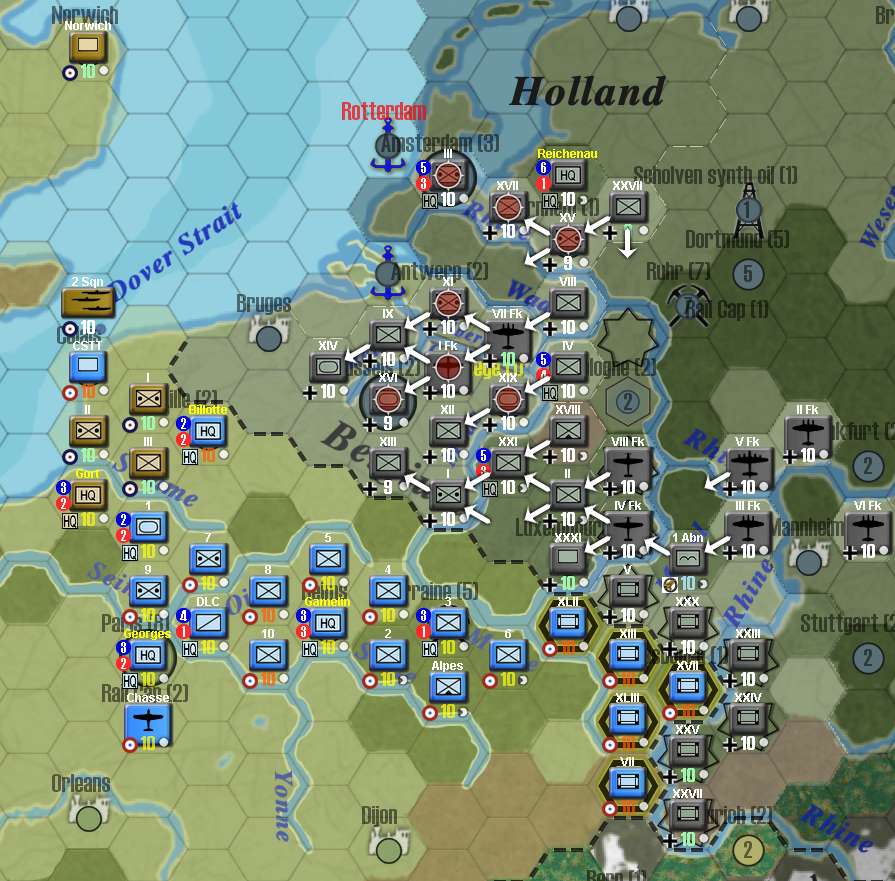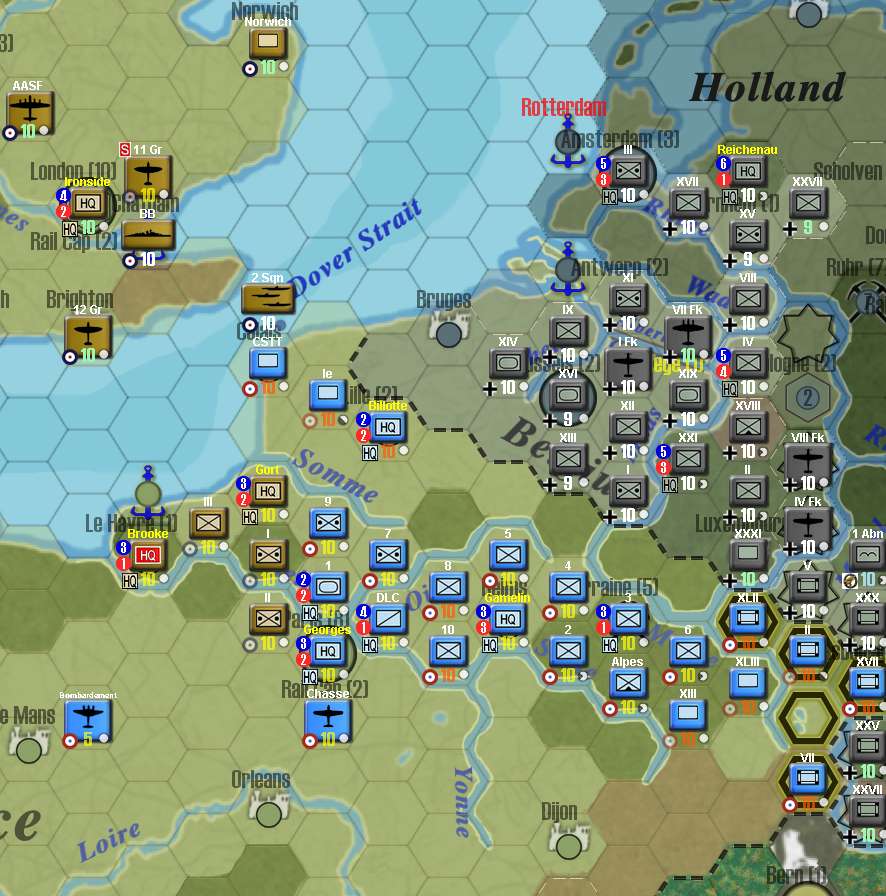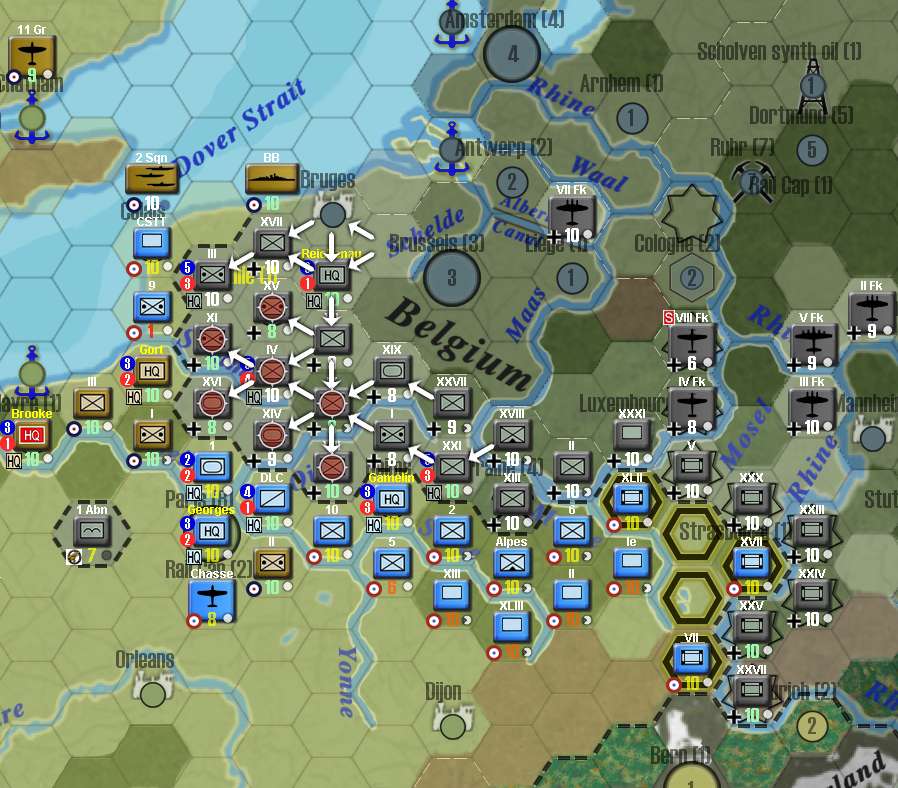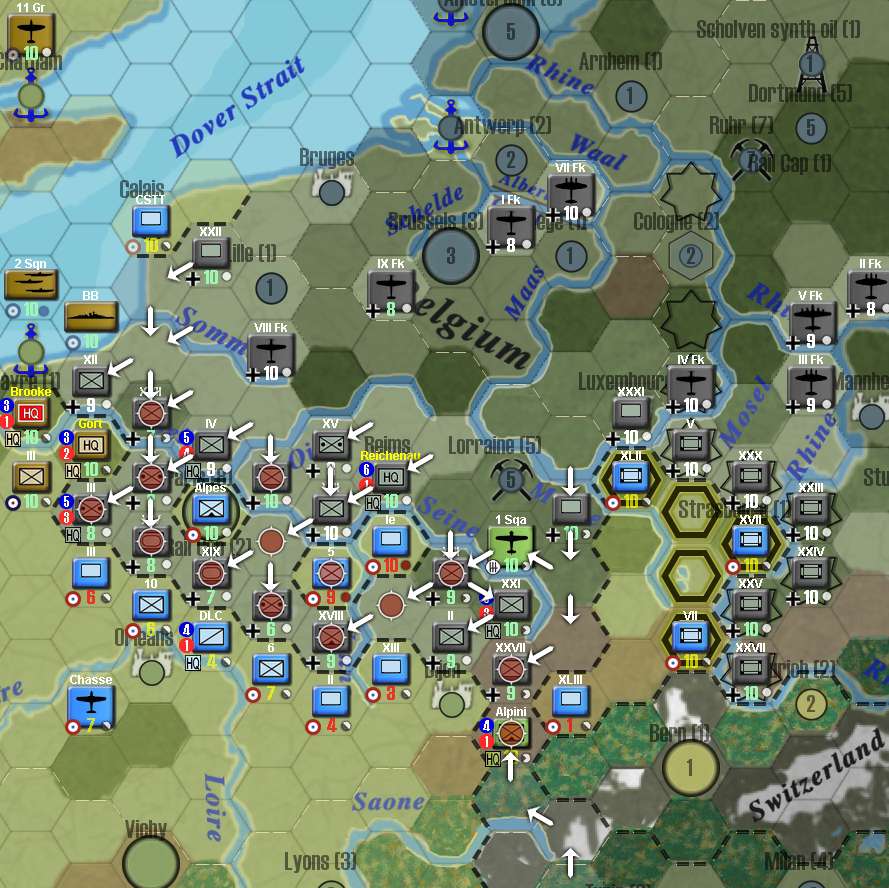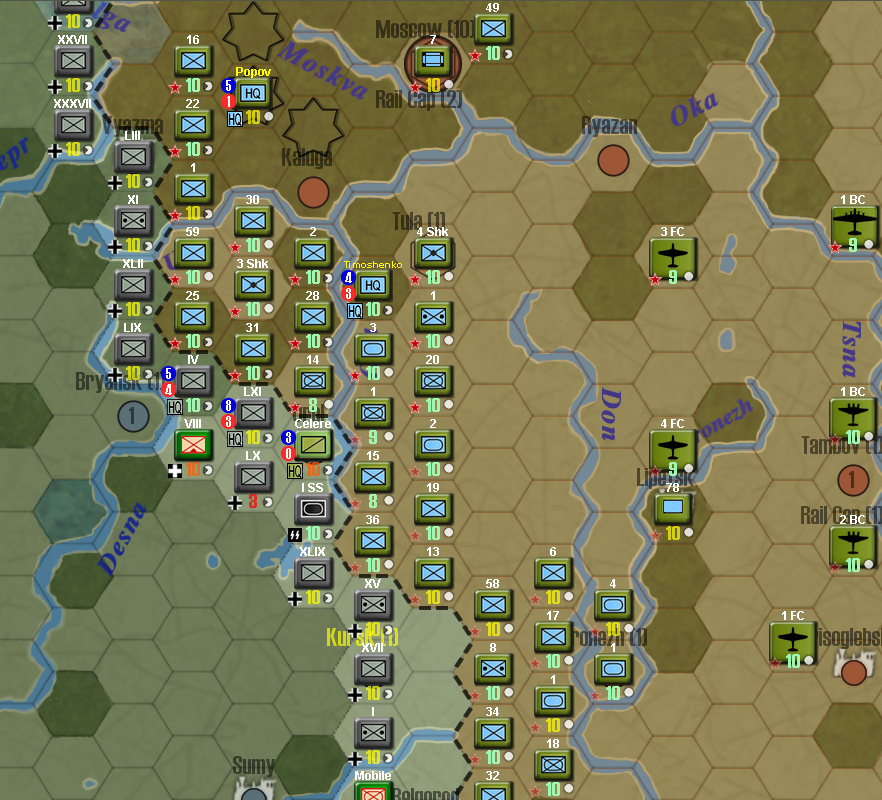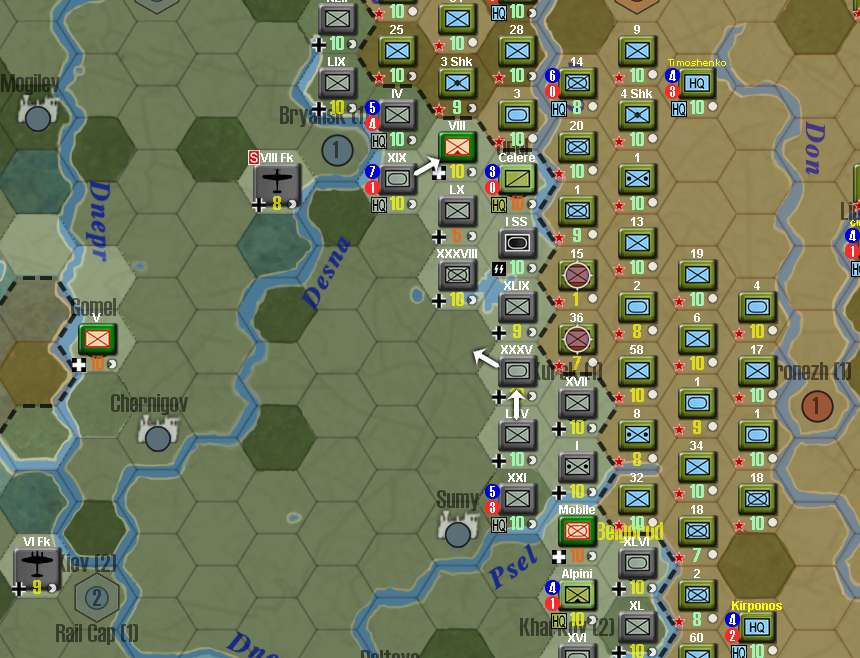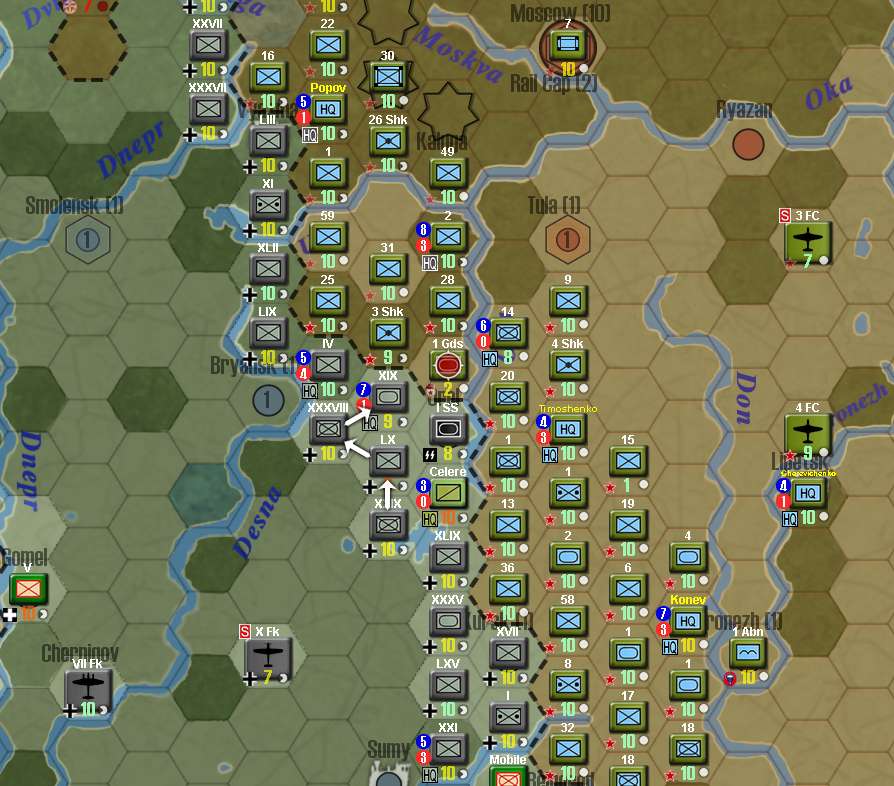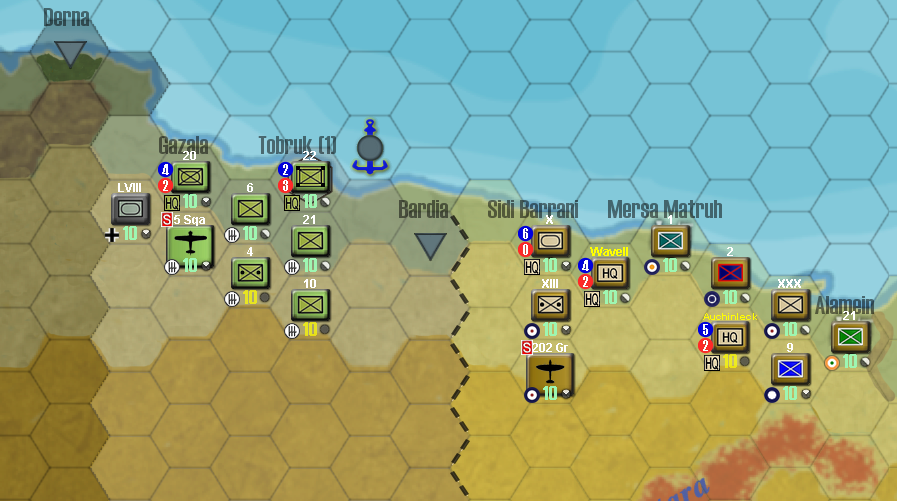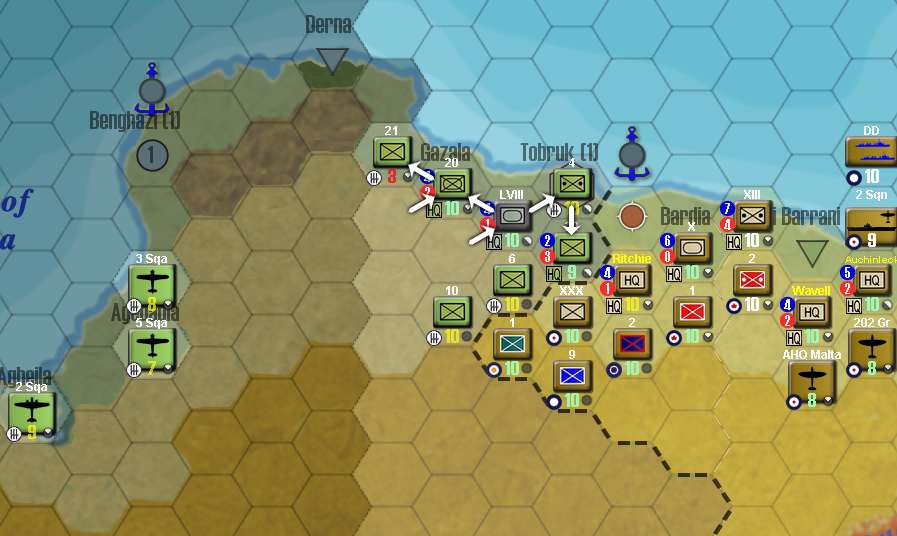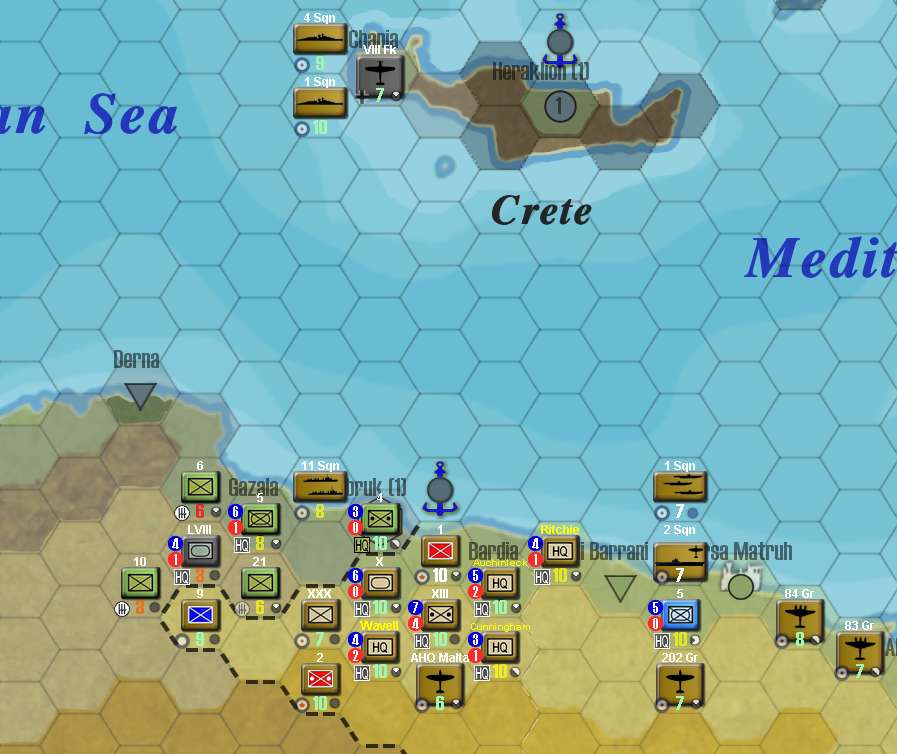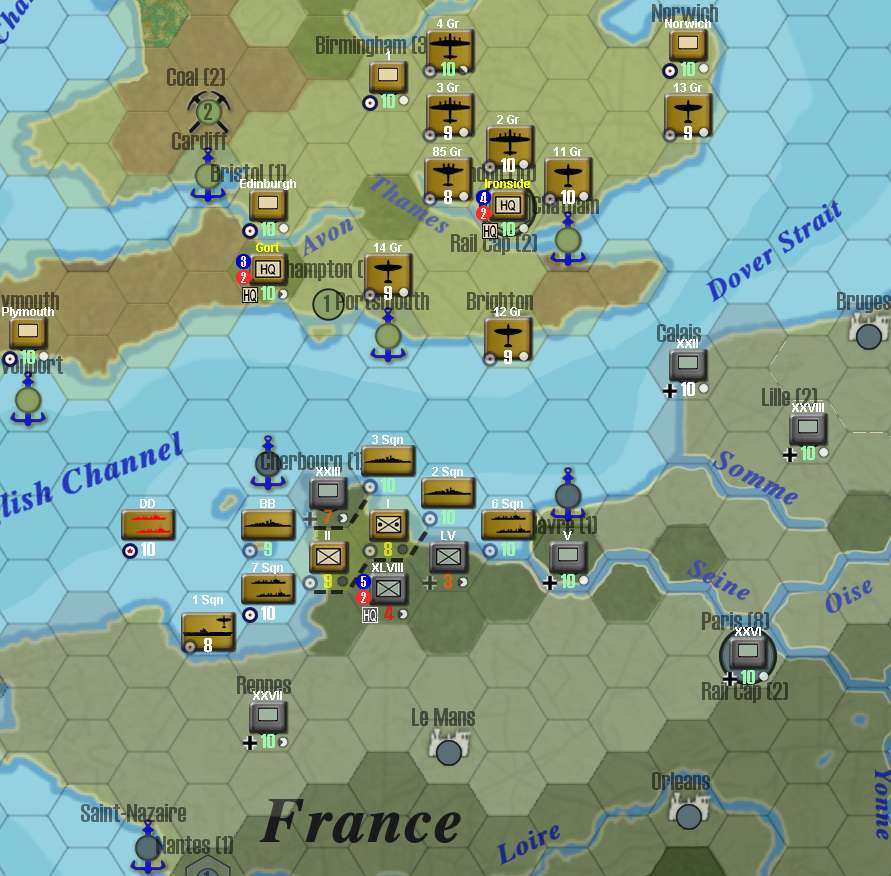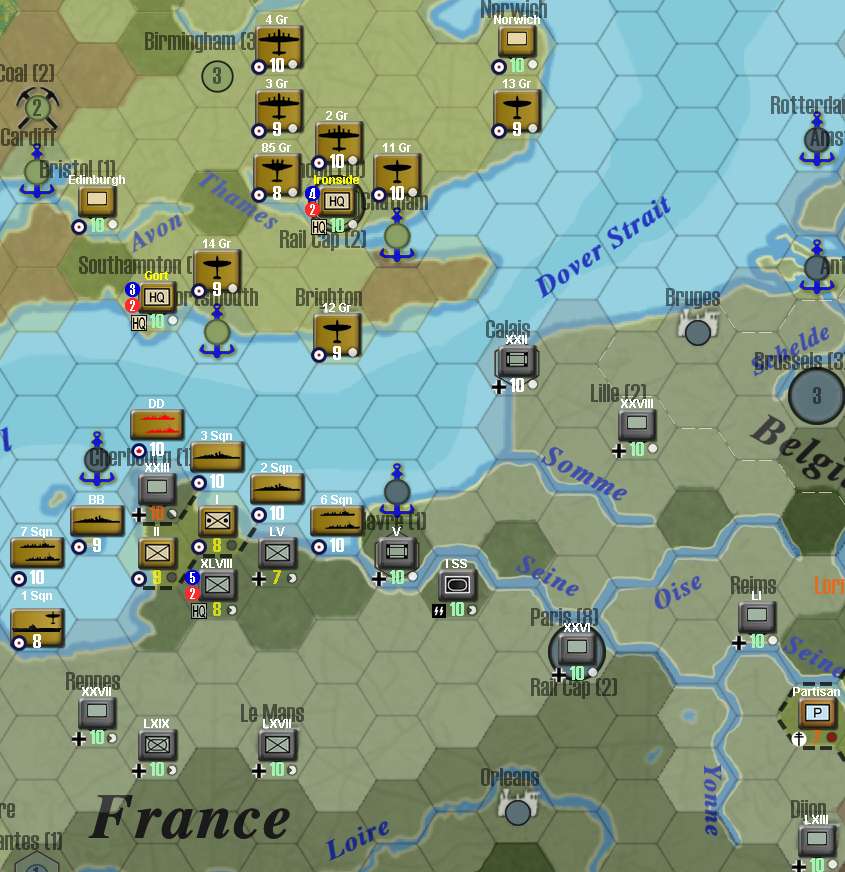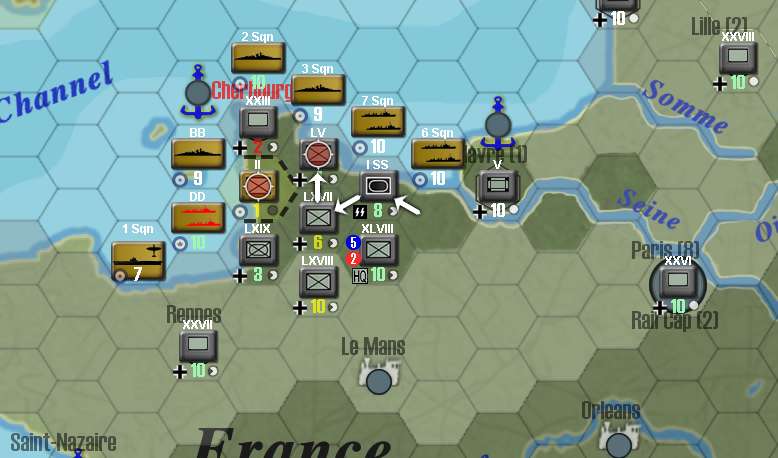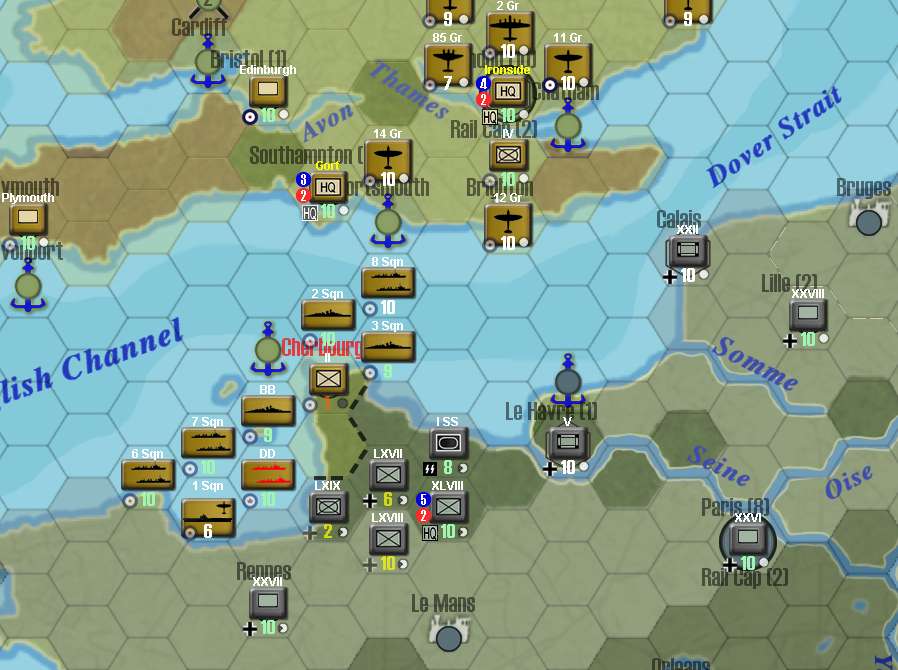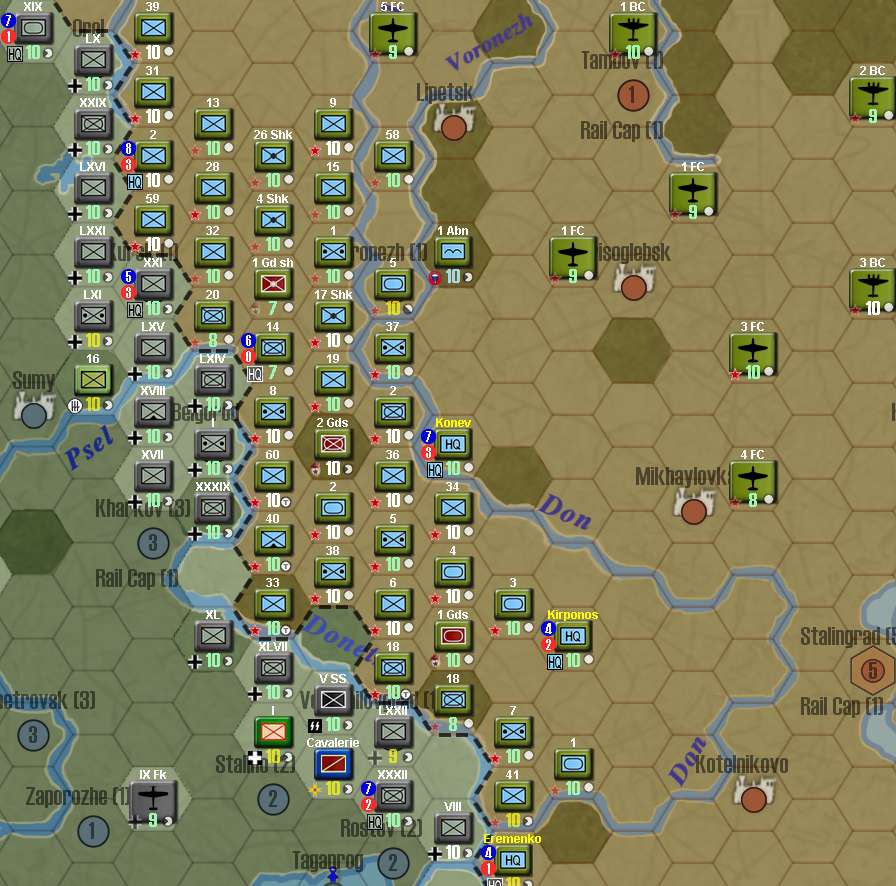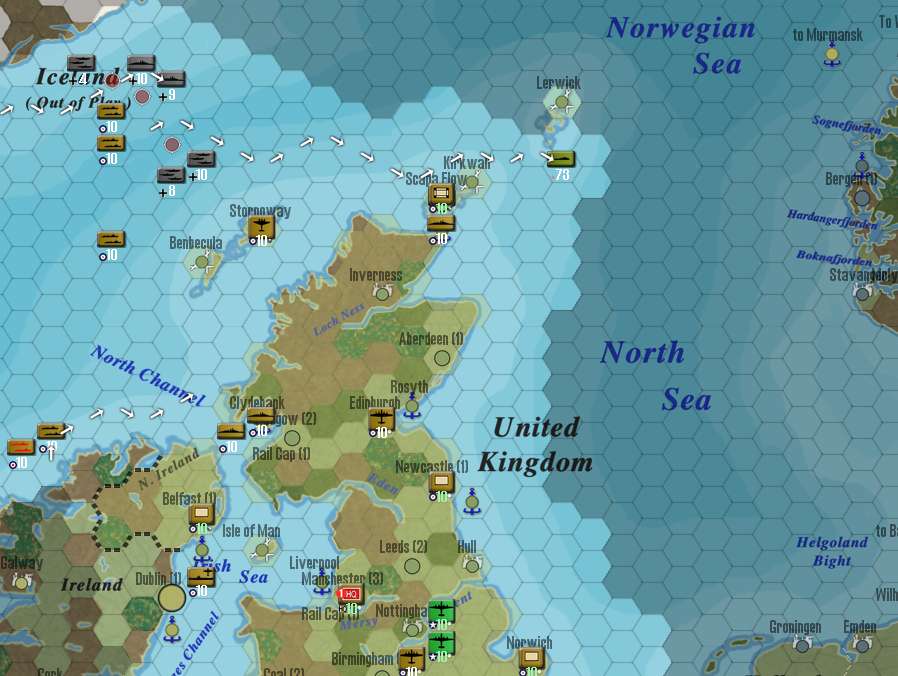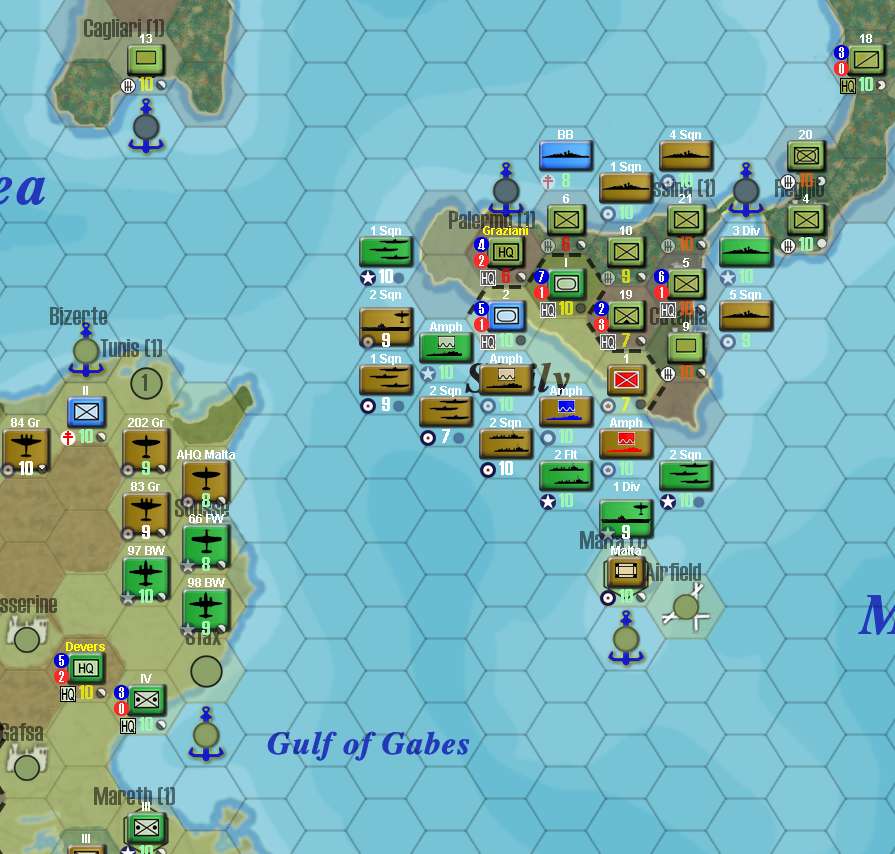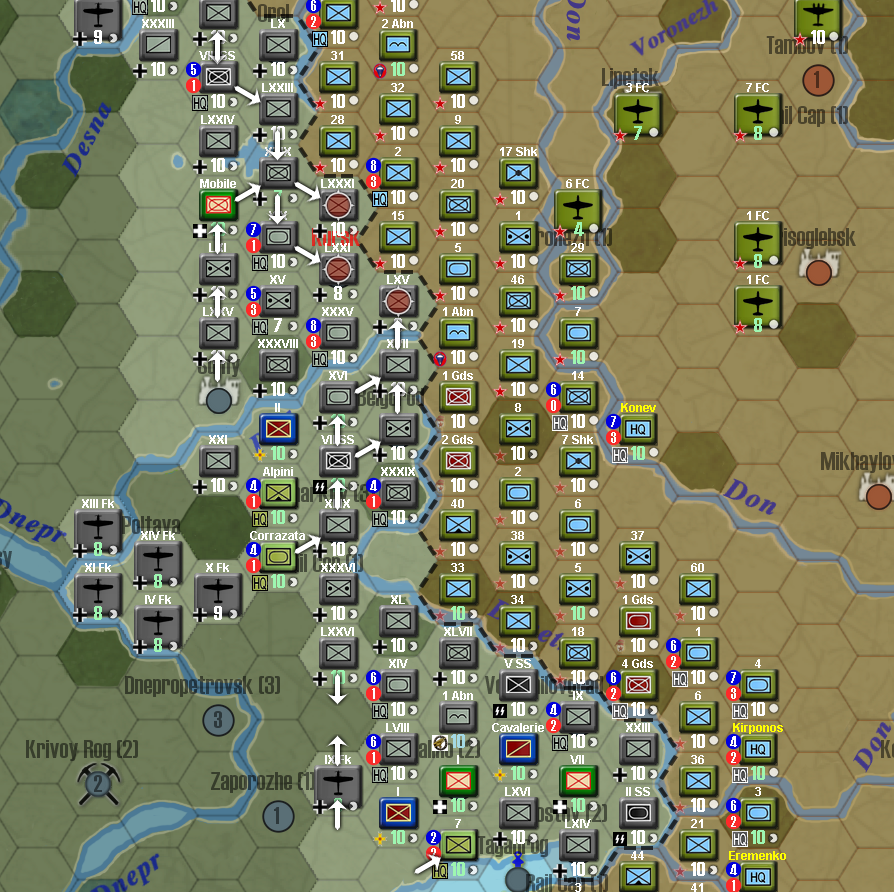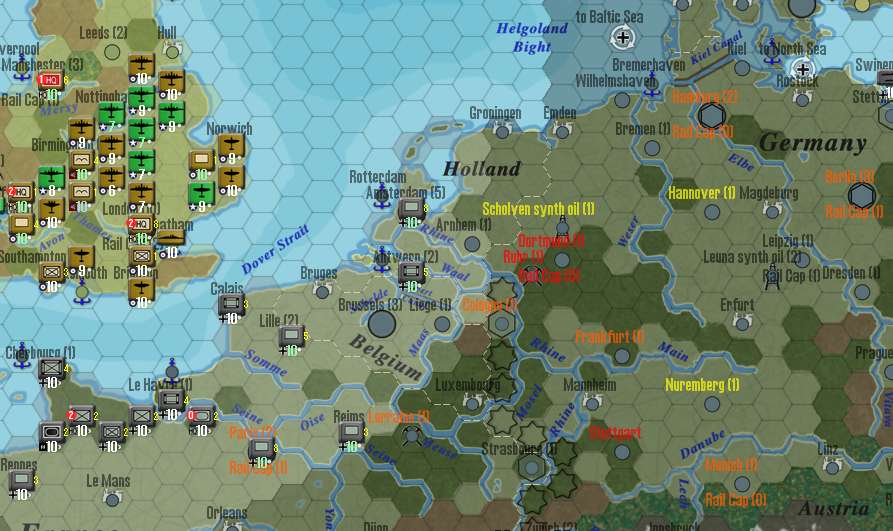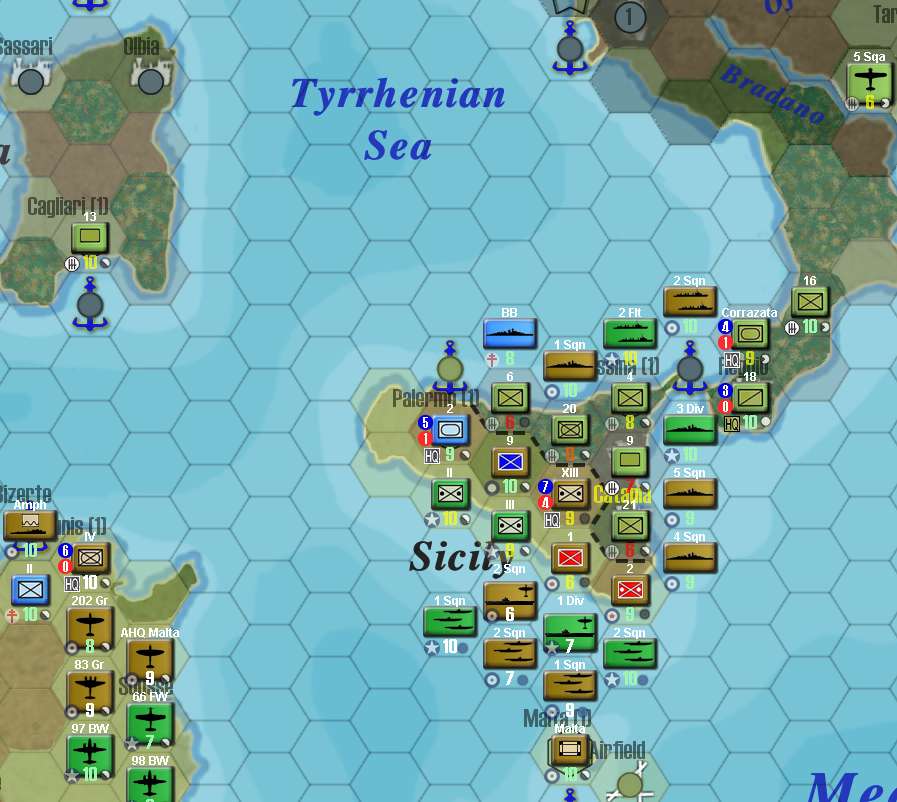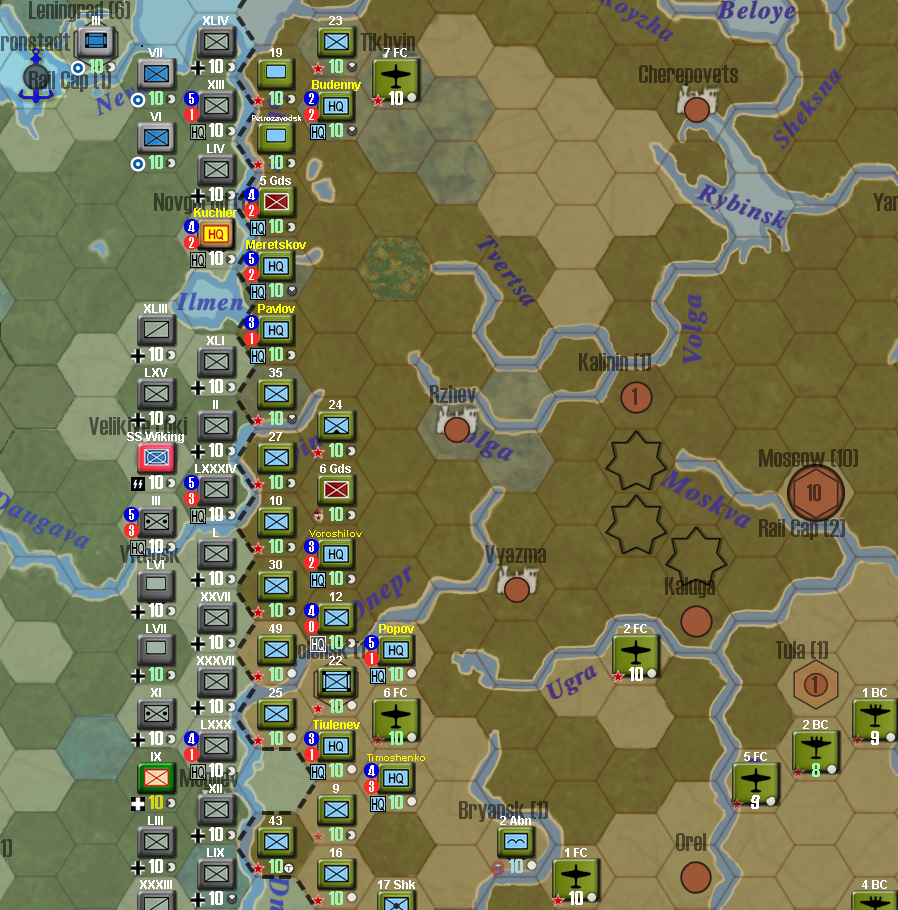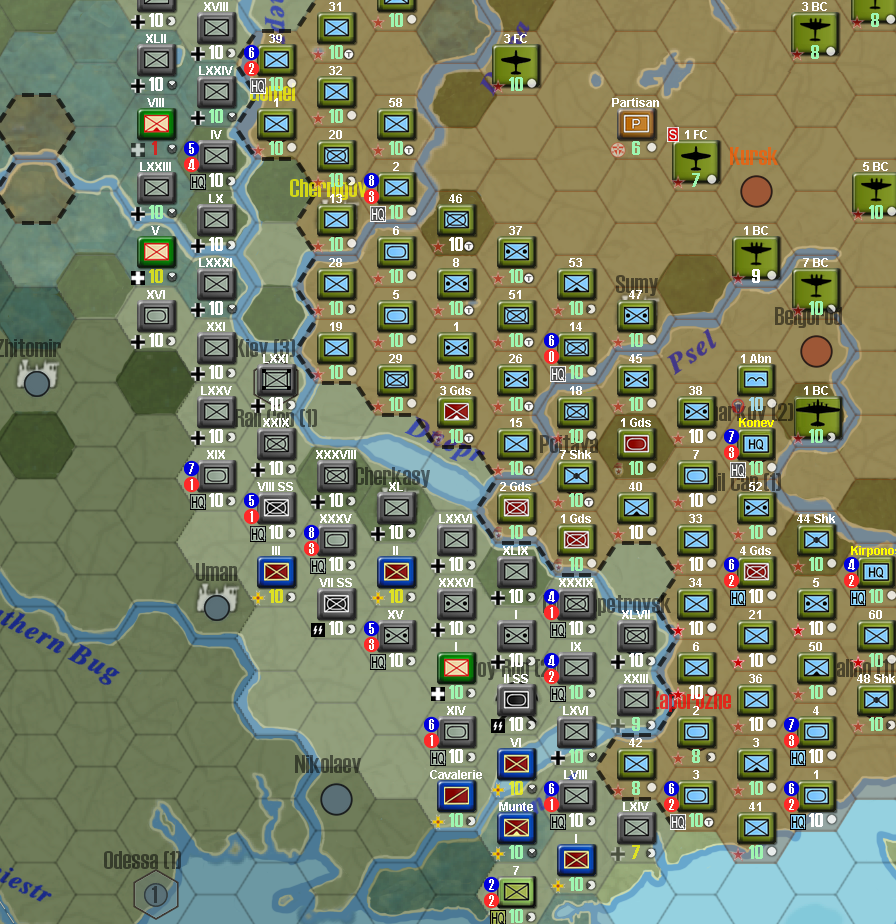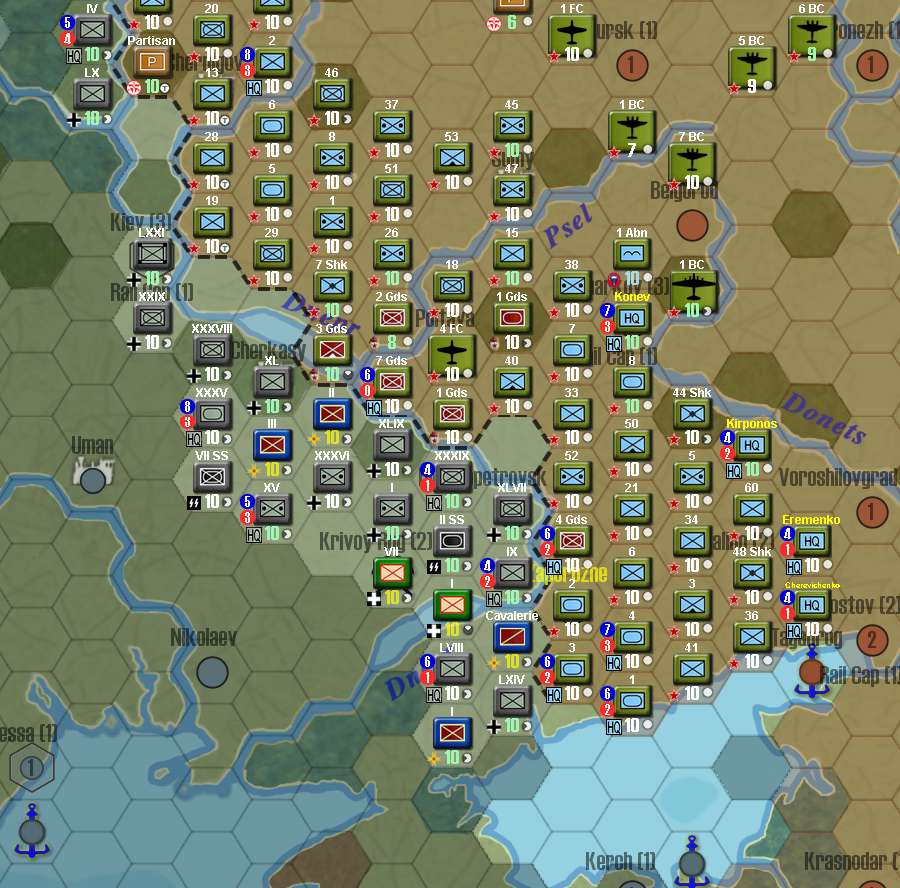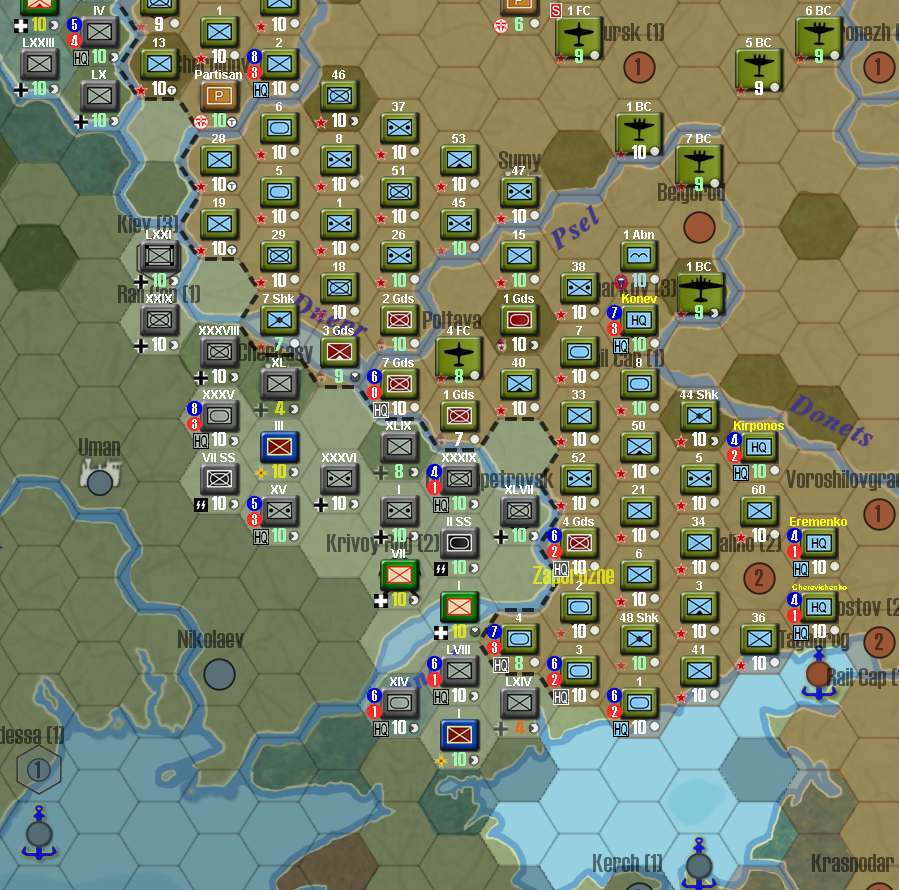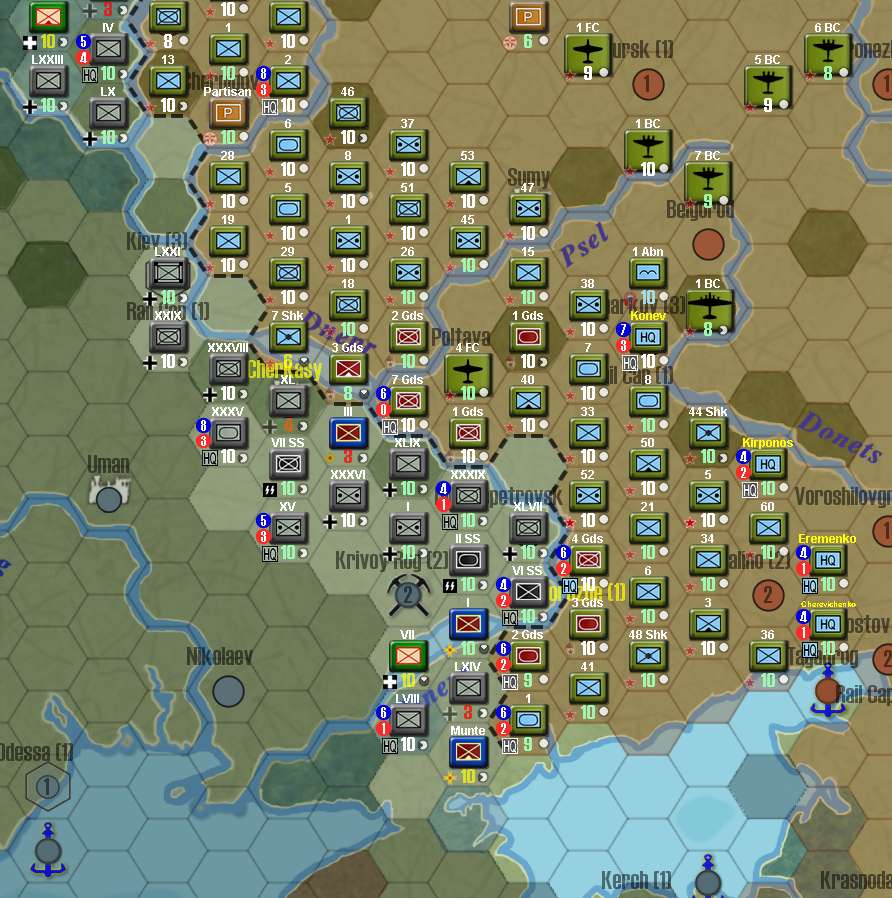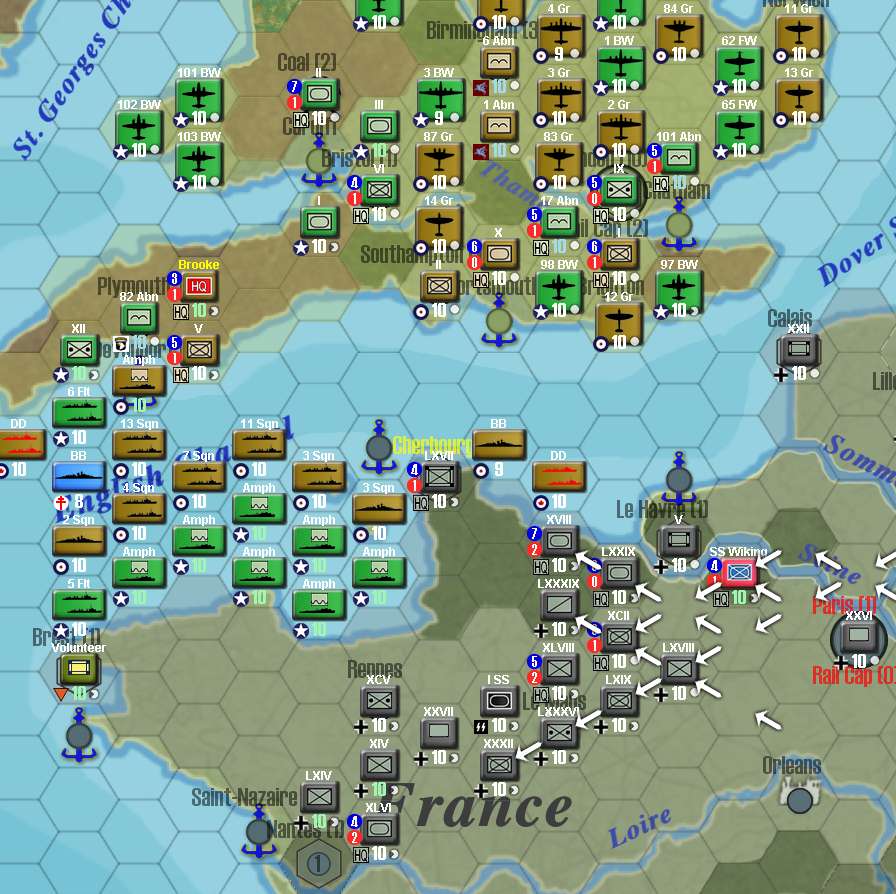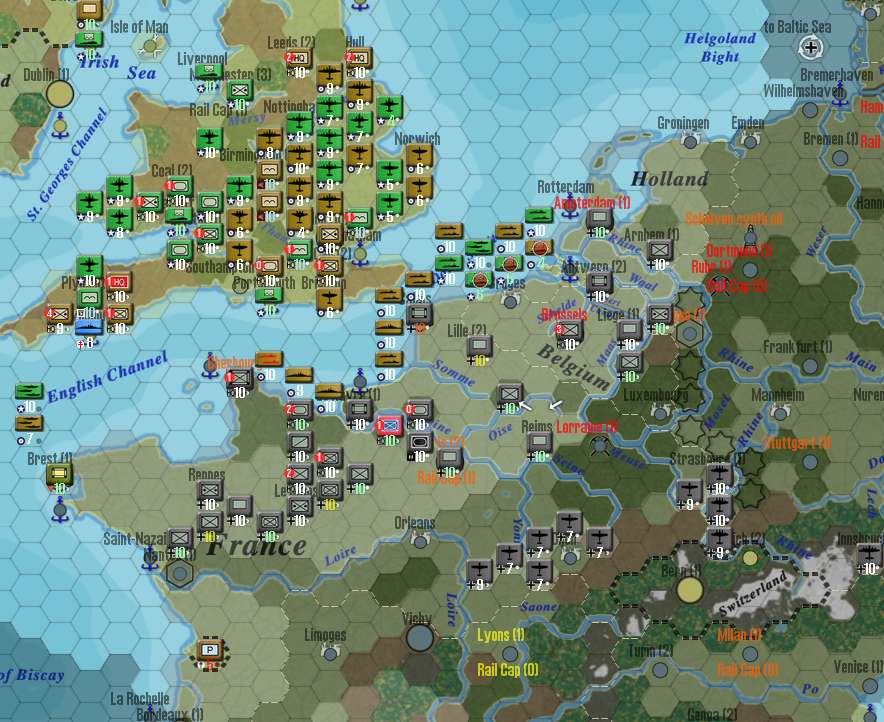Eastern Front, Summer 1942.
First on the Axis to-do list for Eastern Front in 1942 was Leningrad. Finns and Germans started the attack in May 8, 1942 (turn 50). They started well, since Soviet Corps unit with Govorov (+1 defense) commander attached ws halved in strength. It was of little use that the unit become Guards, since 2 turns later, on June 17, 1942, the city fell to the Axis. Soviets have lost an important strategic city and the only positive thing was the performance of VVS during this campaign, that firmly opposed to enemy air attacks, causing considerable losses to Luftwaffe.
In the meantime, central and southern fronts remained quiet on this early Summer campaign stages.
That changed in July 7, 1942 (turn 53) in which real Axis Summer offensive started. Images below correspond to the initial phase of Axis offensive.
Before Axis attacks:

And after:
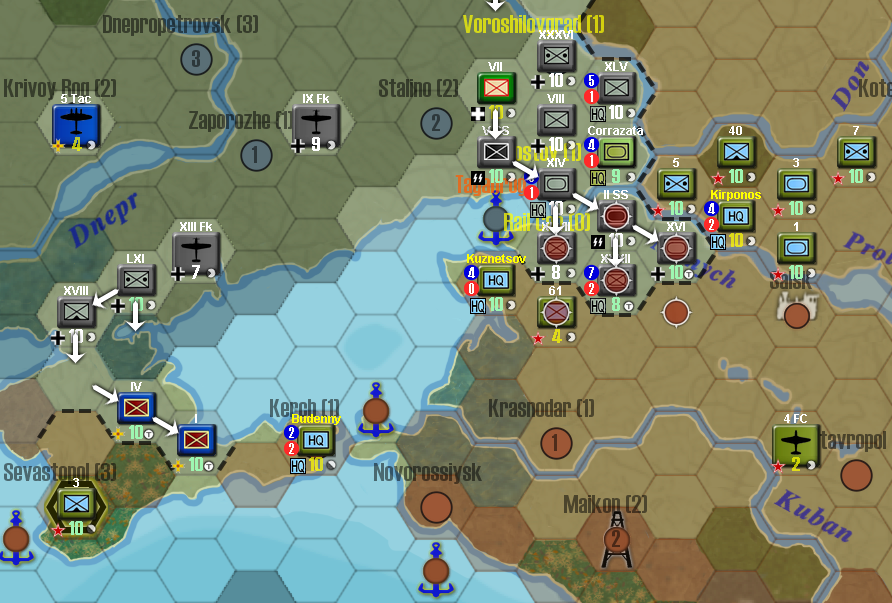
As you can see, sector chosen for the offensive was Don river at Rostov. Wehrmacht crossed the river in force on mentioned spot, destroying 3 Soviet armies and Timoshenko HQ unit. Soviet 61th Army was also attacked and halved in strength. It was a strong mobile and armoured German army onslaught, with those 2 panzerkorps units crossing the river (2 SS PzK and XVI PzK) probably coming from Stalino area. Furthermore, VVS fighter defending this sector of the front was heavily attacked by Luftwaffe and it was left much weakened. At the same time, you can see that Romanians started campaign in Crimea.
Allies turn. Commanded by Kirponos, Soviet army southern front still have sizable forces north of Manych river. But keeping in mind how the left wing of this front had been virtually wiped out and the strength of German armoured forces in this sector, it seemed more advisable to retreat NE and to reinforce defenses at Stalingrad. Kutnesov HQ unit and battered 61th Army retreated to Krasnodar.
July 27, 1942 (turn 54). Kutnesov unit and 61th Army were easily killed by the powerful German forces assigned for the offensive in the Caucasus. Krasnodar and Maikop oilfield were taken:

Image above shows how a mountain unit sent by the Soviets to Novorossiysk as a reinforcement, also suffered badly from Wehrmacht attacks. You can also see how Crimean campaign is now entirely a German army task. Thanks to a generous air support from Luftwaffe air support, Sevastopol is not expected to hold for long.
To make things worse for the Soviets, in the same turn, the Axis also attacked Red Army positions south of Voronezh, destroying 2 infantry corps:
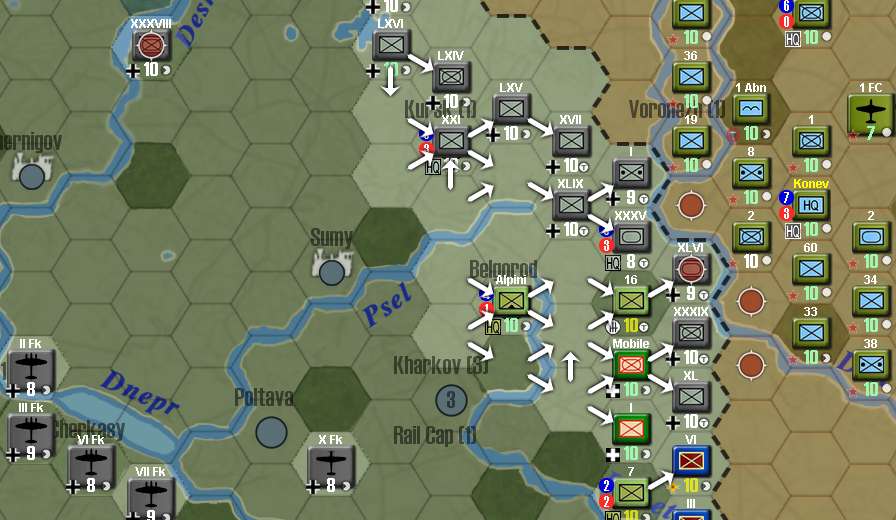
This meant that the Axis was launching two simultaneous big offensives in the east.
Red Army was not in condition to contest Axis offensive in the Caucasus but in Voronezh front it would be possible indeed to engage the Germans into some battles of attrition. This way, in Allies reply, with good air support, Red Army launched strong counterattack in the Don, targeting XLVI PzK, referred armoured unit surviving at very low strength (1).
August 16, 1942 (turn 56). At the Don, south of Voronezh, Germans destroyed a Soviet armoured that had been one of the Red Army units participating in last turn counterattack. In Sevastopol, mountain unit was offering an heroic resistance vs the attacking Germans and became Guards. Meanwhile, in the Caucasus, Novorossiysk fell to the Germans which destroyed depleted mountain unit and HQ unit defending the city.
In Allies turn, Soviets were able to reply to the loss of their armoured, since VVS, previous a spotting move, was able to finish off depleted panzerkorps unit that had been withdrawn to Kharkov. Things were really dull in the Caucasus, with Germans not having any obstacle between them and the Baku oilfields. Some Soviet units were deployed in several cities along the Caucasus trying to, at least, delay the Axis forces.
The fact is that Germans didn't go further neither in the Caucasus nor in Voronezh which was sort of a relief for the Soviets which had seen its PP's income significantly reduced. One reason for the Axis stopping its offensive operations in the USSR might be that it was already late Summer, meaning not many guaranteed fair weather turns ahead. Anyway, Sevastopol was taken by the Germans in September 5, 1942 (turn 57) and Kerch was seized couple of turns later.
Belomorsk had been taken by the Finns during this 1942 campaign which was another limiting factor for the Soviets.
1942 Summer campaign had ended with the Axis strongly consolidating its positions in Eastern Front.
